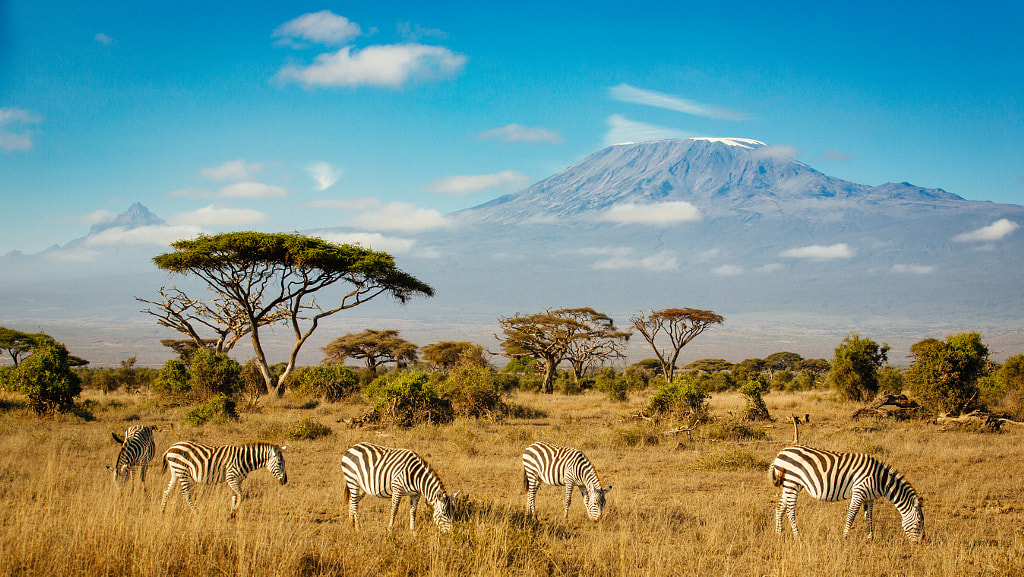Adventure for Dummies: Why a Kilimanjaro trek is your best introduction to adventure
At 5,896 metres, Mount Kilimanjaro in Tanzania is Africa’s highest mountain. But don’t let that age fool or deter you as in reality it is a relatively easy trek to embark upon.
Nicknamed “Everyman’s Everest” as it is the most achievable of the Seven Summits, the highest hills on each of the world’s continent, the climb takes five to seven days and isn’t all that technical. For those with a passion and nose for adventure, the highest free-standing mountain in the world and the tallest mountain in Africa is an essential must do if ever in Tanzania.
A dormant volcano, Kilimanjaro comprises of three cones – Kibo, Mawenze and Shira. The summit, which is on Kibo, is called Uhuru. With some basic training before the trip, anyone with enough determination should be able to conquer Kilimanjaro. Some days will be quite tough, especially when temperatures rise.
Essentially just a long hike and it may not be such a daunting climb, but that doesn’t mean you should entirely underestimate the mountain. There’s no need for gear like pick-axes, ropes and harnesses but it helps if you try and get into some degree of shape before attempting the climb so that you’re up for the challenge, but you don’t need to be in the prime of your life or an Olympic level athlete.
There are five routes to choose from depending on your fitness levels – of these, the Marangu Route and Machame Route are relatively easy and attract the most amount of tourists.
The best time to climb Kilimanjaro, based on various factors including trade winds, is January to March and June to October.
The vegetation keeps changing with each passing day – from farmland to forest, heather and moorland, highland desert and the summit zone. One can not grow accustomed to the sudden changes; one minute you’ll be in a deep forest and the next in a grassy meadow. Wildlife isn’t scarce at the lower levels, and more likely than not, your eyes will get to feast on Africa’s infamous blue monkeys.
On an average, you’ll be walking five to seven hours each day, except the summit day, where it will end up to be a total of at least ten hours. But at the end of it all, you will be rewarded with a view unlike any other as you stand and stare out at the African continent and all the wild beauty it has to offer as the sun begins to slowly burnish the land. Most feel elated while watching dawn break, and that moment makes the whole journey all that much more worthwhile.
Make sure you don’t carry a very heavy bag as each extra kilogram will have you requiring more and more oxygen which can be a problem.
At some point during the climb, most trekkers will be hit by the problem of acclimatization. The best way to prevent this is by taking it slow. So make sure you have a longer itinerary instead of just rushing and pushing hard. Remember to drink plenty of water, and if necessary, carry aspirin or diamox, a drug to treat the symptoms of altitude sickness.
“Pole pole”, which is Swahili for “slow and steady” is a word you will hear each day, and you should pay heed to it. You will most definitely need a day of preparation before and a recovery day afterwards. The best place for this are hotels in Moshi or off the main road that runs from Moshi to Arusha.
Kilimanjaro is definitely a great trek for newbies despite the various factors listed above. It’s a beautiful and unforgettable hike, and an adventure of a lifetime.




















1 Response
[…] Mount Kilimanjaro is also one of the only ascents that takes the climber through terrain patterns ranging from tropical equatorial landscape to sub-arctic scree!This is one of its most peculiar and unique features, owing to the geographic location and climatic conditions around the mountain. The climb takes you on a journey through distinct ecological zones separated by altitude. It begins with dusty savannas at the base followed by dense rain-forests as you get into the second day of the trek. The next bump in altitude is accompanied by alpine deserts replacing the forests, finally ending with the glacial face at the summit. Some say it is like walking from the Equator to the North Pole concentrated on one singular trek. […]